What do COVID-19 figures in October and November tell us about the city’s preparedness to fight the virus.
Since June, the Maharashtra government has allowed a gradual unlocking of services in Mumbai. Non-essential shops, salons, and spas were permitted to open towards the end of June; and by August, malls had re-opened.
On October 5, the government allowed restaurants and food courts to open and the Railways were instructed to increase the capacity on local trains. Many experts forewarned that these unlocking measures, while essential for the economy, would lead to another spike of cases in the city.
But a Citizen Matters analysis of the data released by Brihanmumbai Municipal Corporation shows that there has been a steady decline of COVID-19 cases in the city in October.
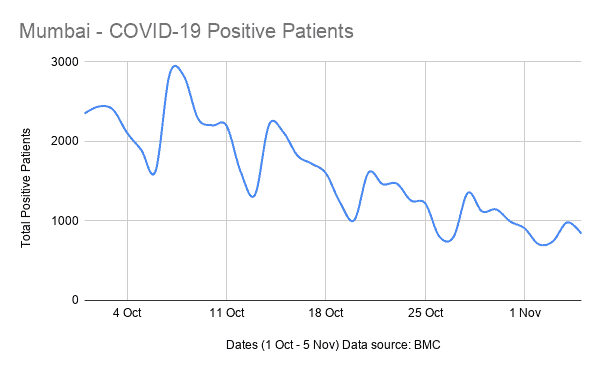
2,352 patients tested COVID-19 positive on October 1. By October 31, the number had decreased to 993, and 983 on November 4. As the above chart shows, there’s an overall decline in the number of people testing positive for the virus in Mumbai, but almost every decline is followed by a rise. The city reported the month’s lowest positive cases, 801, on 27th October but the next day, cases had risen to 1354. The lowest in November so far has been 706 cases reported on November 2.
The total active patients have also fallen from 27,435 on October 1 to 18,753 on October 31 and 15,466 on November 5:
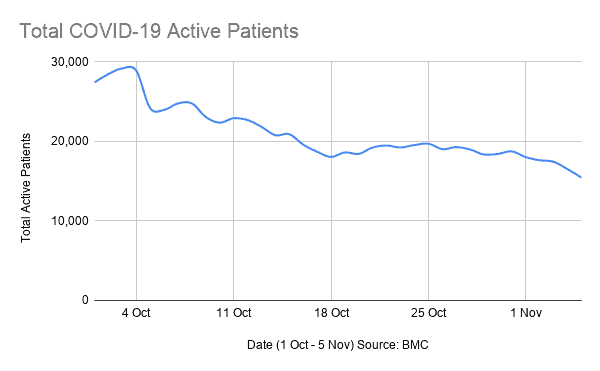
On one level, this can be attributed to an increase in treatment facilities such as COVID care beds for asymptomatic patients or an increase in ICU, Ventilator and Oxygen beds, but there hasn’t been a significant difference in the quantity of beds since August.
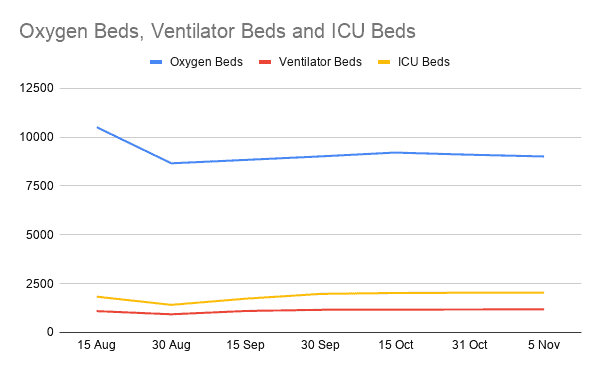
Neither have the number of tests done per day increased. The Municipal corporation conducted a total 3,96,591 tests in October, or 13,219 tests a day on average. The tests have remained in the bracket of 10,000 to 15,000 per day.
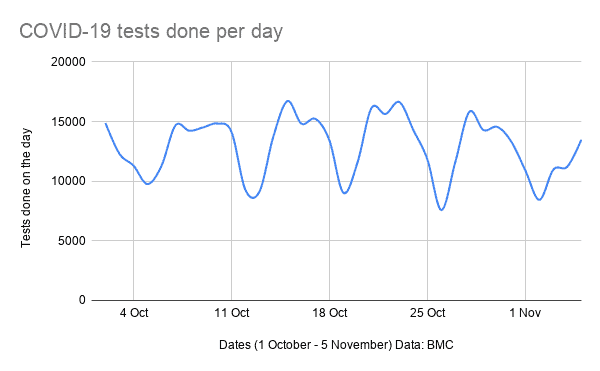
But the city’s doubling rate, or the time taken for a number of cases to double, has steadily increased from 66 days on October 1 to 164 days on October 31. It was at 199 days on November 5.
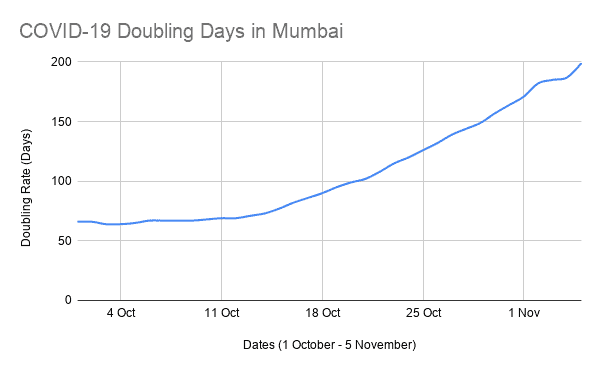
There’s been a dip in the number of COVID-19-related deaths as well but on an average 42 deaths were recorded every day in October. The average has fallen to 40 if you count the first five days of November. As the chart shows, a significant dip in deaths on one day is followed by a spike on another. On October 27, BMC recorded 23 deaths, the lowest of the month, but the number rose to 31 the very next day.
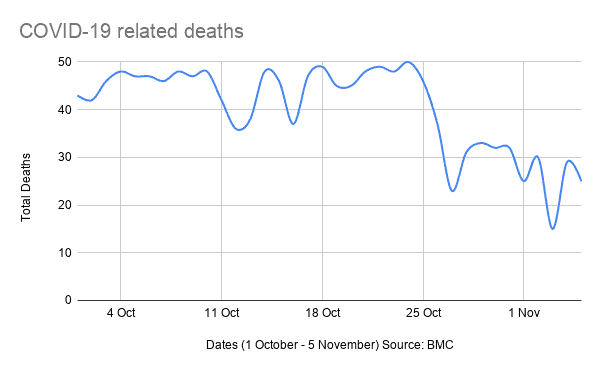
Experts believe that there’s a three to five week delay from the onset of symptoms towards cure or mortality, and the death numbers recorded this month are of cases recorded at least a month ago. But what explains the falling COVID-19 cases despite the relaxation in lockdown measures?
Has herd immunity kicked in?
Herd immunity is a form of protection against an infectious disease when a sufficient percentage of a population has become immune to it either through previous infection or vaccination.
The Tata Institute of Fundamental Research partnered with the Brihanmumbai Municipal Corporation to conduct a three-ward sero survey. Sero surveys tests detect a body’s immune response to a virus, but it may not only be the COVID-19 virus. The first sero survey found that 57% slums and 15% non-slums had developed antibodies. In the second survey, conducted in different pockets, it was found that 45% slums and 18% non-slum areas had developed antibodies. But herd immunity is not a constant state, Dr. Swapneil Parikh clarifies. It doesn’t remain static because of changing variables and conditions.
“A number of factors could be influencing the fall in COVID-19 cases in Mumbai, despite the relaxed lockdown measures,” Dr Parikh says. “There’s an epidemiological triad with the virus, human behaviour and environmental factors on the three sides. An interaction between these three determines transmission.”
Surge in cases expected
Extreme levels of humidity, such as when it’s too high or low, or increased UV radiation impact the virus, Dr Parikh says. Mumbai has been witnessing a change in weather conditions due to the receding monsoons and lower humidity levels.
Another condition is the human behaviour. Some patients are known to be super spreaders, someone who is more likely to infect others than another infected person. This is determined by their behaviour. “Many people don’t want to get tested because of the fear of being ostracised from their community, and continue their old lifestyle,” a doctor from the Sion Hospital says. “People are also wary of having their homes sealed or being sent to dissatisfying COVID centres.”
Dr Parikh believes that people should be “incentivised to test and isolate”, and testing must be aggressive, higher than what it is at the moment.
Till then, the fewer reported cases must not bring in complacency. Infectious diseases, historically, have risen and fallen with season. Dr Parikh compares COVID-19 with the Spanish influenza in 1918 where there were clear spikes in June, July and then in December and January, he says. “If we go by that pattern, the coming winter can be harsh for Mumbai.”
All charts are by the author